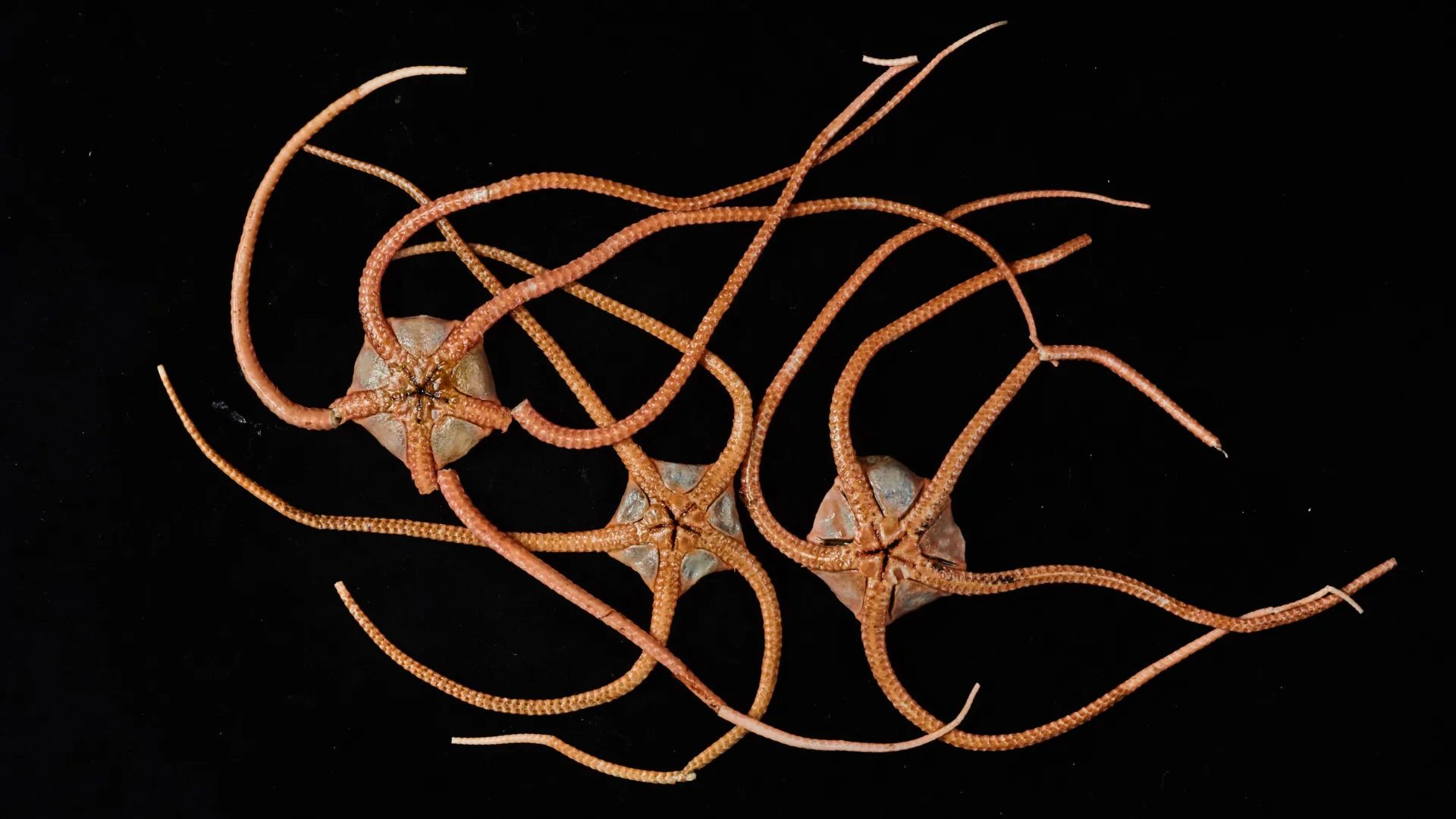DNA from the deep reveals a hidden ocean “superhighway”
A world-first study led by Museums Victoria Research Institute has revealed that beneath the cold, dark, pressurised world of the deep sea, marine life is far more globally connected than previously imagined.
- Date:
- August 7, 2025
- Source:
- Museum Victoria
- Summary:
- Deep beneath the ocean's surface, a groundbreaking DNA study reveals that the deep sea is far more globally connected than once thought. By analyzing thousands of brittle stars preserved in museum collections, scientists discovered these ancient creatures have silently migrated across the planet's seafloor for millions of years, forming a vast evolutionary network from Iceland to Tasmania.
- Share:

A world-first study led by Museums Victoria Research Institute has revealed that beneath the cold, dark, pressurized world of the deep sea, marine life is far more globally connected than previously imagined.
Published on July 23 in Nature, this landmark study maps the global distribution and evolutionary relationships of brittle stars (Ophiuroidea), the ancient, spiny animals found from shallow coastal waters to the deepest abyssal plains, and from the equator to the poles.
By analyzing the DNA of thousands of specimens collected on hundreds of research voyages and preserved in natural history museums around the world, scientists have uncovered how these deep-sea invertebrates have quietly migrated across entire oceans over millions of years, linking ecosystems from Iceland to Tasmania.
This unprecedented dataset offers powerful new insights into how marine life has evolved and dispersed across the oceans over the past 100 million years.
"You might think of the deep sea as remote and isolated, but for many animals on the seafloor, it's actually a connected superhighway," said Dr Tim O'Hara, Senior Curator of Marine Invertebrates at Museums Victoria Research Institute and lead author of the study.
"Over long timescales, deep-sea species have expanded their ranges by thousands of kilometers. This connectivity is a global phenomenon that's gone unnoticed, until now."
This is the most comprehensive study of its kind, using DNA from 2,699 brittle star specimens housed in 48 natural history museums across the globe. These animals which have lived on Earth for over 480 million years are found on all ocean floors, including at depths of more than 3,500 meters.
Unlike marine life in shallow waters, which is restricted by temperature boundaries, deep-sea environments are more stable and allow species to disperse over vast distances. Many brittle stars produce yolk-rich larvae that can drift on deep ocean currents for extended periods, giving them the ability to colonize far-flung regions.
"These animals don't have fins or wings, but they've still managed to span entire oceans," said Dr O'Hara. "The secret lies in their biology - their larvae can survive for a long time in cold water, hitching a ride on slow-moving deep-sea currents."
The research shows that deep-sea communities, particularly at temperate latitudes, are more closely related across regions than their shallow-water counterparts. For example, marine animals found off southern Australia share close evolutionary links with those in the North Atlantic, on the other side of the planet.
Yet, the deep sea is not uniform. While species can spread widely, factors such as extinction events, environmental change, and geography have created a patchwork of biodiversity across the seafloor.
"It's a paradox. The deep sea is highly connected, but also incredibly fragile," said Dr O'Hara. "Understanding how life is distributed and moves through this vast environment is essential if we want to protect it, especially as threats from deep-sea mining and climate change increase."
This research not only transforms our understanding of deep-sea evolution but also highlights the enduring scientific value of museum collections. The DNA analysed in this study came from specimens collected during 332 research voyages, many undertaken decades ago, and preserved in institutions including Museums Victoria's Research Institute.
"This is science on a global scale," said Lynley Crosswell, CEO and Director of Museums Victoria. "It demonstrates how museums, through international collaboration and the preservation of biodiversity specimens, can unlock new knowledge about our planet's past and help shape its future."
This world-leading project was made possible through partnerships with more than 40 institutions globally, spanning natural history museums, universities and marine research organizations including support via grants of sea time on RV Investigator from Australia's CSIRO Marine National Facility.
Story Source:
Materials provided by Museum Victoria. Note: Content may be edited for style and length.
Journal Reference:
- Timothy D. O’Hara, Andrew F. Hugall, Margaret L. Haines, Alexandra A.-T. Weber, Angelina Eichsteller, Martin I. Brogger, Marc Eléaume, Toshihiko Fujita, Jon A. Kongsrud, Pedro Martinez Arbizu, Sadie Mills, Jennifer M. Olbers, Gustav Paulay, Fran Ramil, Sarah Samadi, Chester J. Sands, Javier Sellanes, Francisco A. Solis-Marin, Adnan Moussalli. Spatiotemporal faunal connectivity across global sea floors. Nature, 2025; DOI: 10.1038/s41586-025-09307-1
Cite This Page: